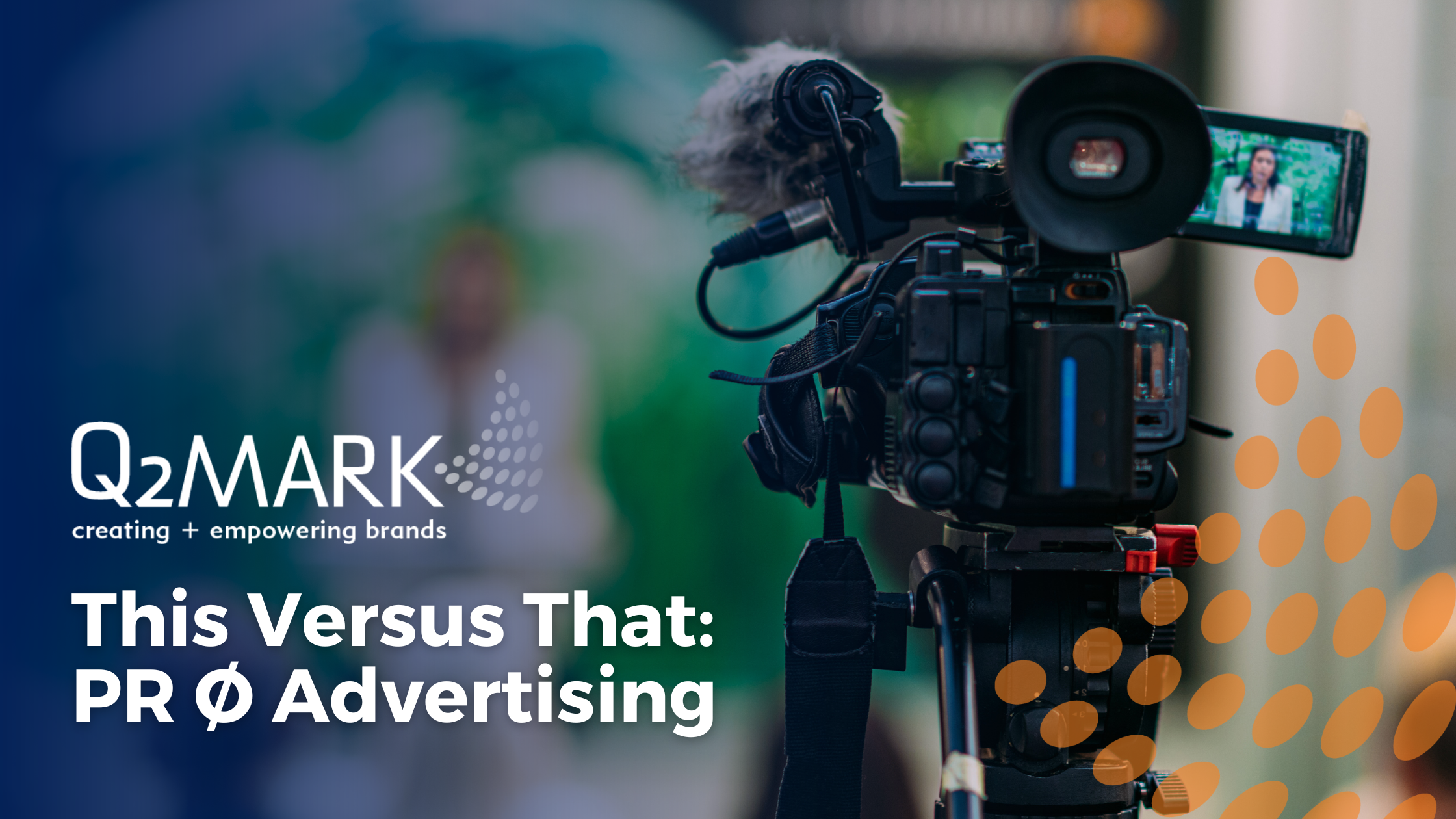
This Versus That: PR Ø Advertising
There is a difference between PR and advertising, but don’t be alarmed if you think they are the same because you are not alone.
See, there is a myth floating around that advertising and public relations play the same role when used in business. If a company does advertising, then they don’t need to do PR and vice versa. But in actuality, they have entirely different roles, and to truly reach your business goals, you need to understand the difference and what roles they play in your company.
Not to go all Webster Dictionary on you, but here is a quick breakdown:
- Advertising is creating paid announcements that will be promoted through different types of media – TV, print, online, radio, etc.
- Public Relations is strategic communication that builds a mutually beneficial relationship between an organization and the public.
PR helps build a connection with your audience and target market by promoting specific messages to them. Public relations helps to build trust as consumers are more likely to read and take note of something that is written in an article versus something that is plastered on a billboard.
To help you get a clearer picture, here is a breakdown of the top differences between advertising and public relations.
1. Marketing vs. Media Research
Advertising: Advertising is all about demographics and the market you are targeting with your product or service. You need to perform in-depth customer research – likes, dislikes, wants, needs, demographics, etc. – to find the right audience and medium to advertise.
Public Relations: With PR, all of the same market research is pertinent, too, but instead of directly sharing with your audience, you need to know what publications and reporters cover a particular topic you are pitching to.
2. Paid vs. Free
Advertising: Your business will pay for ad space, and you will know exactly when your ad will air/publish.
Public Relations: As your consultant, it’s our job to establish strategies for you to gain free positive publicity in the media.
3. Control vs. No Control
Advertising: Since you are paying for space, you have control over what goes into your message. So get creative and go all out to capture your audience’s attention.
Public Relations: Once your story is in the hands of the journalist, you surrender control. The media then decides how to use the story and what parts to use, if they even use it. Remember, just because you sent them coverage doesn’t mean they will use it.
Part of our job at Q2Mark is to offer you media training so you are prepared to take control of an interview or other media opportunities secured for you.
4. Duration of Coverage
Advertising: Once again, you paid for your ad space, so you get to decide how long your ad runs and how many times it will be shown in the media based on the budget you allocated to advertising.
Public Relations: For PR, you put your story into a press release, and you submit that press release once to each media outlet. From there, the editor, producer, etc., decide how and when to use your story. The advantage is that by sending it to several different mediums, your target audience will see the information differently – via radio, television, and newspaper – effectively reinforcing the message.
5. Credibility
Advertising: When an audience sees an advertisement, they know a company has bought it for the purpose of trying to sell a product or service. So, unfortunately, advertisements generally have less credibility than that of coverage gained by PR.
Public Relations: Generating a free outside endorsement by the media helps to create great credibility for your product or service. When someone sees news coverage of your event on TV or reads an article reviewing your product or service, something you didn’t pay for, they automatically view it differently than a paid advertisement.
6. All About The Audience
Advertising: To target your audience through advertising, once again, you are paying for your ad to be directly placed in specific media, i.e., a specific TV spot, a particular local newspaper section, or a specific radio slot.
Public Relations: Your message can be communicated in various ways through PR. As your consultant, we work to send your message to a specific audience through newsletters, emails, blog posts, and social media posts or work to hook editors and producers to share your story in articles or interviews.
7. Writing Style
Advertising: In advertising, you use short call-to-action words and phrases that create a buzz to motivate your prospective buyers to take action.
Public Relations: When drafting a press release, you should write it in a newsworthy format. Think of a no-nonsense news story to create a buzz here.
PR and advertising are essential for reaching your desired audience in various mediums. While they provide results separately, when used together as equal parts of a tactful integrated communications strategy, the results are powerful. What line of promotions have you been using in your business? Did you understand the difference? If so, have you been getting the results you are looking for? If not, don’t fret. Let the pros propel your growth progress.
Contact us today >> https://q2mark.as.me/ComplimentaryTriageCall
Phone: 760-458-9201
Email: susie@q2mark.com




